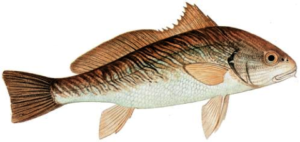ICHTHYONYMPHI
Research Directions:
Reproduction and physiology
Production technologies
Description:
 The ICHTHYONYMPHI proposal continued our studies for the acquisition of biological knowledge necessary for the integration of the Shi drum (Umbrina cirrosa) in the Mediterranean fish farming. We studied larval rearing, which is the most difficult phase in the life cycle. Egg production was done by breeders kept in Cyprus and the eggs were transfered to HCMR for larval rearing using the Mesocosm method. This method was used for the first time in the shi drum, and was studied as an alternative way of larval rearing in order to increase the viability and improve the morphological characteristics of the fish. In particular, previous studies have shown that the shi drum exhibits some skeletal deformities when the larval rearing is done by intensive methods. The presence of such deformities will be studied during the production of shi drum with the mesocosm method.
The ICHTHYONYMPHI proposal continued our studies for the acquisition of biological knowledge necessary for the integration of the Shi drum (Umbrina cirrosa) in the Mediterranean fish farming. We studied larval rearing, which is the most difficult phase in the life cycle. Egg production was done by breeders kept in Cyprus and the eggs were transfered to HCMR for larval rearing using the Mesocosm method. This method was used for the first time in the shi drum, and was studied as an alternative way of larval rearing in order to increase the viability and improve the morphological characteristics of the fish. In particular, previous studies have shown that the shi drum exhibits some skeletal deformities when the larval rearing is done by intensive methods. The presence of such deformities will be studied during the production of shi drum with the mesocosm method.
The ontogeny of the digestive system of the shi drum was also studied, and the effect of the exogenous diet on the morphogenesis of the digestive system was investigated. We have previously shown that this species can be reared without the use of Artemia nauplii as feed, which is essential for other marine species. Artemia, along with Brachionus plicatilis, is one of the live foods given to marine fish at this stage, and constitutes 50% of the total cost of producing fish. It is therefore important to investigate the reasons why the digestive system of the shi drum can accept industrialized food directly after the administration of rotifers, and Artemia is not needed. Such information could lead us to ways to reduce the use of Artemia also in other cultivated species. Histological findings, combined with the ontogenetic scale of the species, will form the basis for the proper management of farmed shi drum larvae. Finally, the ICHTHYONYMPHI proposal studied the adaptation and growth of the shi drum in low salinity conditions, so as to investigate the possibility of its cultivation in lagoons, with the ultimate goal of making the shi drum a species for their mild exploitation.




